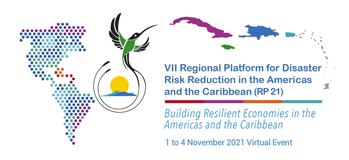Journalists told "No such thing as a natural disaster"
Journalists from across the Americas region were urged to spread the word that natural hazards such as earthquakes and tornadoes may be impossible to stop but that there is nothing inevitable about the loss of life and economic damage they inflict.
“Disasters are not natural,” Kevin Blanchard, of the ‘no #NoNaturalDisasters’ international campaign, told a UNDRR-organized online workshop for several dozen journalists from the Americas and Caribbean ahead of the region’s most important meeting next week on disaster risk reduction.
“A hazard does not have to turn into a disaster,” he said via video link. “The decisions that we take as humans are what turn a hazard into a disaster,” which he defined as a “sudden calamitous event that disrupts a functioning community and exceeds their ability to cope using own resources”.
Journalists and other media professionals can play an important role in helping educate people and political leaders about the real nature of disasters and their causes so that policy decisions are taken that can mitigate future risk. “When we blame nature … in flooding for example … we are giving an imprecise version,” said Raymundo Padilla, an expert at Mexico’s Colima University on disaster media coverage in Latin America. “Earthquakes do not kill; it is the buildings and the bad construction.”
Media training is one of the main strategies used by UNDRR to promote public consciousness of the crucial need for disaster risk reduction, especially in developing economies and small island developing states (SIDS). Further journalist training sessions will be held during the VII Regional Platform for Disaster Risk Reduction in the Americas and the Caribbean, which is being hosted by Jamaica 1-4 November. The platform will lay down strategies for the development of disaster-resistant economies.
Training helps to make disaster risk more visible and strengthens the journalistic coverage of environmental issues, such as the impact of climate change, which the latest scientific reports make clear will become increasingly prominent in the months and years to come.
“Media professionals help strength the perception of society of what threats are most pressing. They give a voice to the many people facing these threats and help us to understand the complex situation in which they live,” Padilla told the workshop.
The Americas and the Caribbean has produced many award-winning environmental journalists. However, there is still a shortage of reporters specialized in the coverage of environmental threats in a particularly hazard-prone region.
Padilla emphasized the need for journalists and media professionals to be well prepared, with a strong understanding of the social context in which disasters occur because the impact of disasters tended to be amplified where living conditions are marked by poverty and vulnerability.
It is also important that journalists are aware of the dangers involved in covering disasters and not put their own lives and health at risk unnecessarily. The last thing that civil defence and rescuers need at a time of an emergency is for journalists themselves to add to their problems by becoming victims, he said.
Beside holding further training sessions for journalists, the UNDRR is working on developing a network of journalists from the Americas and the Caribbean who specialize in covering climate change and disaster resistance issues. The network will provide a space in which to exchange experiences and advice and provide examples of good coverage.


